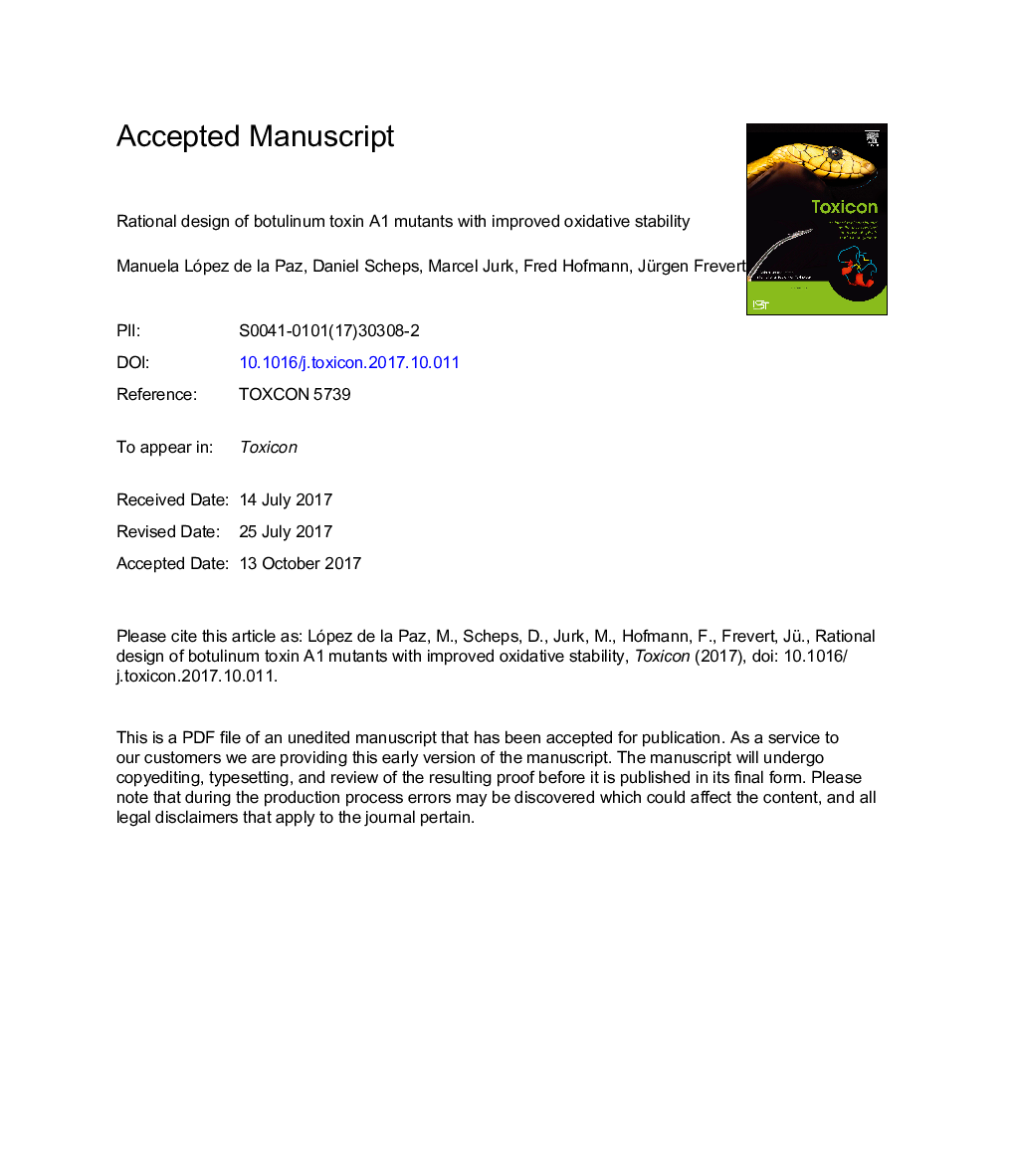| Article ID | Journal | Published Year | Pages | File Type |
|---|---|---|---|---|
| 8394305 | Toxicon | 2018 | 29 Pages |
Abstract
Botulinum neurotoxins (BoNTs) are the most potent toxic proteins to mankind known but applied in low doses trigger a localized muscle paralysis that is beneficial for the therapy of several neurological disorders and aesthetic treatment. The paralytic effect is generated by the enzymatic activity of the light chain (LC) that cleaves specifically one of the SNARE proteins responsible for neurotransmitter exocytosis. The activity of the LC in a BoNT-containing therapeutic can be compromised by denaturing agents present during manufacturing and/or in the cell. Stabilization of the LC by reducing vulnerability towards denaturants would thus be advantageous for the development of BoNT-based therapeutics. In this work, we focused on increasing the stability of LC of BoNT/A1 (LC/A1) towards oxidative stress. We tackled this task by rational design of mutations at cysteine and methionine LC/A1 sites. Designed mutants showed improved oxidative stability in vitro and equipotency to wildtype toxin in vivo. Our results suggest that suitable modification of the catalytic domain can lead to more stable BoNTs without impairing their therapeutic efficacy.
Related Topics
Life Sciences
Biochemistry, Genetics and Molecular Biology
Biochemistry, Genetics and Molecular Biology (General)
Authors
Manuela López de la Paz, Daniel Scheps, Marcel Jurk, Fred Hofmann, Jürgen Frevert,
